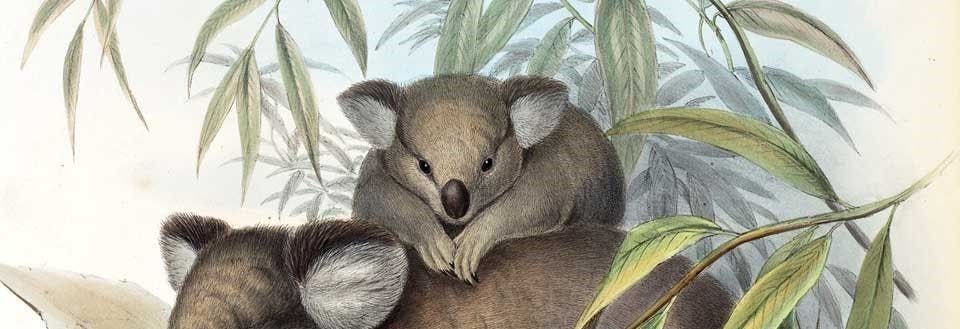Geoffroy Saint-Hilaire, Isidore (1805-1861).
“Description des mammifères nouveaux.... Quatrième Mémoire, Famille des singes, second supplément.” In: Archives du Muséum d’Histoire Naturelle, 1858-61, vol. 10.
The chimpanzee and orangutan were fairly well understood in the 1850s; Richard Owen had written a long paper on the anatomy of these two great apes in 1835, and there were specimens of both in the London Zoo. But the gorilla was a newcomer. Although legends about it go back to the seventeenth century, the gorilla was discovered and scientifically described only in 1847. The French naturalist Isidore Geoffroy Saint-Hilaire wrote the first in-depth treatise on the gorilla in 1858; the wonderful lithograph, the first of its kind, was drawn by Marie Firmin Boucourt, who also executed a startling face-front portrait of a chimpanzee (see introduction to this section).
We include this article for two reasons. First, the images are too wonderful to omit from an exhibition on the grandeur of life. Second, it is important to make the point that the discovery of the gorilla lies well off the path to Darwin’s Origin of Species. Darwin was concerned with barnacles, and pigeons, and seed transport by birds, and he left discussion of the apes to others, such as Owen and Thomas H. Huxley. Only much later, when he was preparing his Descent of Man (1871, would Darwin take up the problem of ape and human affinities. In the Origin of Species, he would say nary a word.

